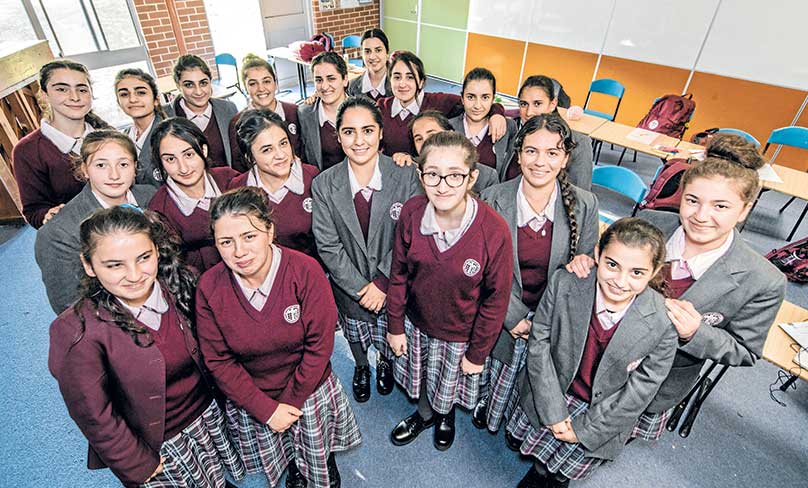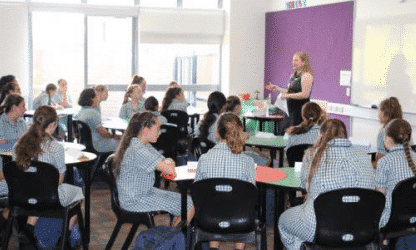
It is important to ask why new single-sex schools are springing up in the USA and in Australia. Between 2002 and 2012, the number of single-sex public schools in the United States grew from only about a dozen to an estimated 500, according to the National Association for Single Sex Public Education.
I write as the former Headmaster of two Sydney independent boys’ schools, Redfield College in the Hills district, and Wollemi College, founded in the west of Sydney in 2005.
I am now on the board of Harkaway Hills College, which started in 2016 in Melbourne’s south east, a growing school modelled on the other Parents for Education Schools in Sydney.
It is not because of economic considerations. Indeed single-sex schools are more expensive to create. Bigger coeducational schools have economies of scale. It costs more to duplicate campuses, school halls and libraries.
There are other more important reasons to set up and fund single-sex schools. Let’s not be thrown by the patronising notion that because government partly funds non-government schools then parents should be grateful and do it the state’s way. Political theory 1A tells us we are not in a communist state and we do not exist for the state. The state, with our taxes, is there to help us.
See related story: Get off to a good start at “Big School”
There is substantial evidence for superior academic results from single-sex schools.
Recent studies suggest the significant educational advantages transcend the socio-economic profile of the families and the schools.
NAPLAN analysis on the Australian Council for Educational Research website shows that boys in single-sex schools between Years 3 and 7 (the only data presented) retain 3.9 terms of numeracy advantage over coeducational students throughout these four years.
Girls in single-sex schools were not far behind, but coeducational students failed to make up any ground on this. We are told that the results hold even after correction for socio-economic factors.
Critics have argued that as society is multicultural then schools should be coeducational.
But if there is any logic in comparing schools with multicultural society, surely schools should be multicultural not coeducational. Or that coeducation is a matter of ‘equality’. But equality is not uniformity. If both boys and girls have the opportunity to attend single-sex schools, as they do, then where is the lack of equality?
In fact there is significant evidence that students in single-sex schools outperform their counterparts on various measures of safety, and social and emotional development.
New research from the University of Queensland and the Australian Gender Equality Council focuses on aspects of resilience, and shows the superiority of single-sex schools in promoting self-confidence of girls.

The study of 10,000 girls showed that, although the self-confidence of pre-adolescent girls in the general population falls below that of boys and does not recover until old age, girls who are enrolled in single sex schools enjoy the same levels of self-confidence as boys.
But squabbling about which style of education is best actually misses the point.
Let us ask the parents what they want. There is absolutely no consensus that a child, because he or she is educated in a single-sex school, is disadvantaged, yet there is plenty of evidence to the contrary.
The five Parents for Education single-sex schools in Australia are patently providing outstanding academic education (a Wollemi student in 2018 achieved a perfect HSC score of 99.95, with more than a third of the students achieving an ATAR of over 90-plus – unprecedented for a non-selective school in the far west of Sydney), but even that is not the key issue.
See related story: 10 Tips to not only survive but thrive NAPLAN
Nobody has a greater right than a child’s parents to determine the moral agenda or the style of education for a child.
Therefore parents have the right, and the duty, to follow their best judgement and place their children in the form of education in which they have most confidence.
Some will define education as being about learning literacy and numeracy, others will place character or dance classes at the top of the list. This is the parent’s prerogative.
Consider the UN Declaration on the Rights of the Child: article 18 – ‘Governments should help parents by providing services to support them’; article 20 – ‘Children who cannot be looked after by their own family must be looked after properly by people who respect their religion, culture and language’.
Schools and teachers are there to help, not to impose their own nanny principles.
It is parents, not government, who are responsible for education of a child. We have forgotten this.
But we are in the age of Safe Schools where architects of the program cynically mock parents whose rights they are usurping. We are in an era where many politicians and academics just don’t get it.
